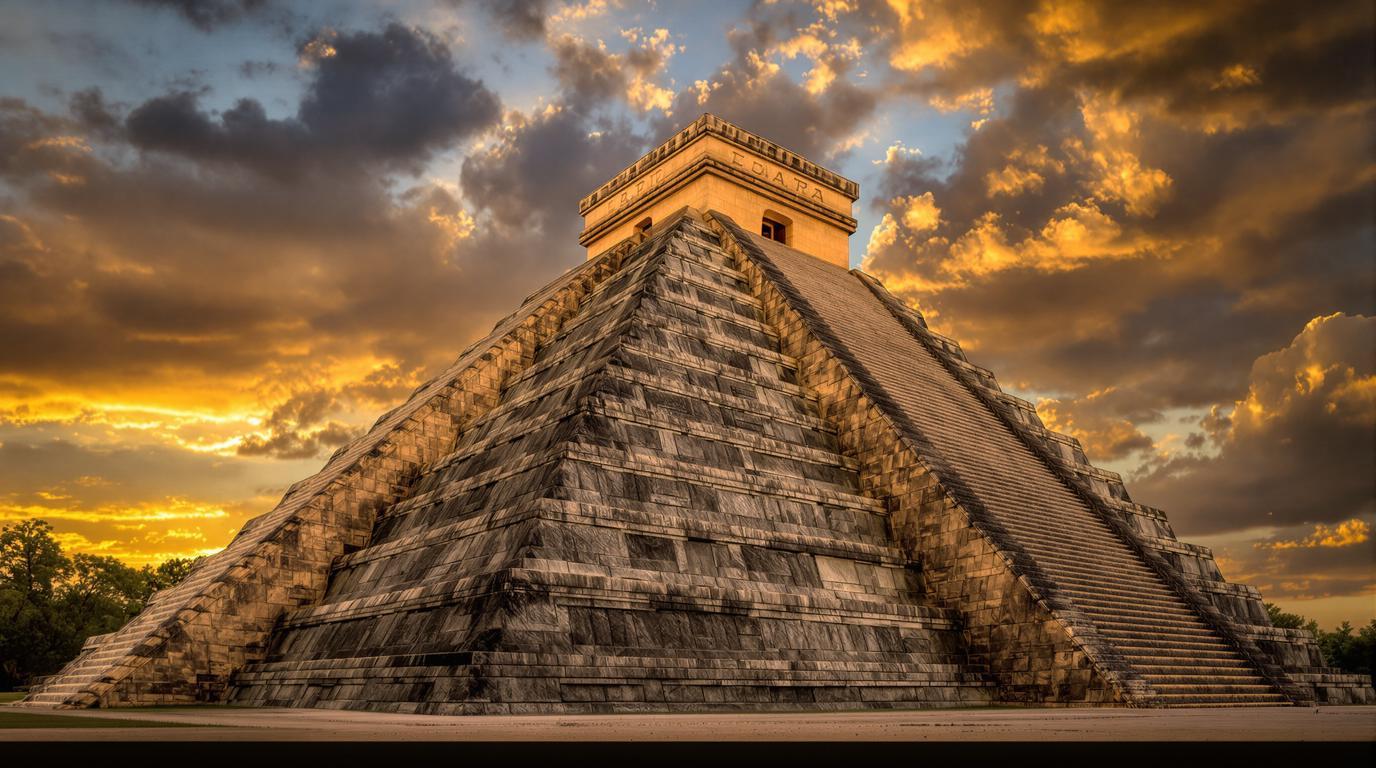A colossal serpent of shadow slithers down the northern face of El Castillo pyramid during spring and fall equinoxes, drawing thousands of mesmerized onlookers. This astronomical precision is just one marvel of Chichén Itzá, the ancient Mayan metropolis that continues to captivate over 2.6 million visitors annually. While many travel landmarks claim historical significance, few match this UNESCO World Heritage site’s perfect fusion of architectural genius and celestial choreography.
The city that challenged time
Founded between 600-750 CE, Chichén Itzá reached its golden age under Toltec influence during the 10th-12th centuries. The city’s name, meaning “at the mouth of the well of the Itza people,” hints at its strategic position near sacred cenotes (natural sinkholes) in Mexico’s Yucatán Peninsula. These natural formations weren’t merely water sources but portals to the underworld where elaborate ceremonies took place.
Archaeologist Dr. Rafael Cobos explains:
“What makes Chichén Itzá extraordinary is how its builders encoded their cosmic understanding into stone. Their calculations were so precise that celestial events still align perfectly with the structures over 1,000 years later.”
The pyramid that whispers secrets
El Castillo (Temple of Kukulkan) stands as the site’s iconic centerpiece—a 79-foot testament to Mayan mathematical brilliance. Its four stairways of 91 steps each, plus the temple platform, total exactly 365 steps—one for each day of the year. The structure’s nine terraces, divided by the staircases, represent the 18 months of the Mayan calendar.
The pyramid’s acoustic properties remain equally impressive. A clap at its base produces an echo resembling the call of the quetzal bird, sacred to the Mayans. This acoustic marvel shares similarity with the restored ancient cathedrals of Europe where architectural and acoustic design intertwine.
The ball court where life hung in balance
Chichén Itzá boasts the largest ball court in Mesoamerica—an arena stretching 545 feet long and 225 feet wide where players engaged in a ritual game with life-or-death stakes. Stone carvings along the walls depict the victorious team captain being decapitated—an honor in Mayan culture, as the sacrifice guaranteed passage to paradise.
Like the cenotaphs of ancient Indian capitals, these courts weren’t merely sporting venues but sacred spaces where cosmic order was maintained through ritual sacrifice.
The sacred cenote of sacrifice
Perhaps most haunting is the Sacred Cenote, a natural limestone sinkhole measuring 200 feet across and dropping 80 feet to a pool of water. Archaeological dredging has recovered gold, jade, pottery, and human remains—evidence of sacrificial rituals during times of drought. These cenotes created dramatic landscapes similar to those found on Greek islands formed by ancient volcanic activity.
El Caracol: The ancient observatory
The observatory known as El Caracol (“the snail”) features a circular design with specialized viewing windows aligned with astronomical events—particularly the movements of Venus, which held special significance in Mayan cosmology. The precision rivals medieval European structures like French castles that incorporated astronomical elements centuries later.
Traveling tips from a local guide
Manuel Uc, a guide from nearby Pisté village, offers practical advice:
“Visit early morning before 9am or late afternoon after 3pm to avoid both crowds and heat. The site is least crowded mid-week. Bring water, wear comfortable shoes, and don’t forget a hat—there’s little shade.”
The new Maya Train connecting Cancún to archaeological sites has dramatically increased visitor numbers, making these timing strategies even more valuable. Like the hidden villages of French wine country, the surrounding communities offer authentic experiences away from tourist crowds.
Standing in Chichén Itzá’s Great Plaza as the afternoon light transforms limestone to gold, visitors experience the same awe felt by pilgrims a millennium ago. This isn’t merely visiting history—it’s stepping into a sophisticated civilization’s cosmic vision, encoded in stone and shadow, perpetually retelling its story through mathematical precision and astronomical dance.
